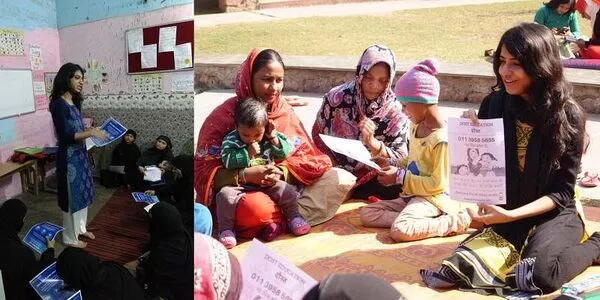Children whose parents do not have the resources to fully meet their needs are at a disadvantage. They are more likely to go hungry, travel often, start school unprepared to learn, and develop chronic health conditions. Social insurance and safety net programs, including Medicaid, Social Security, Supplemental Security Income, the Affordable Care Act, nutrition and housing subsidies, provide assistance importance. However, they are not enough to meet the growing demand, which has been exacerbated by the COVID-19 pandemic.
Contents

Even before the pandemic forced tens of thousands of parents out of work, 34.5% of American children lived in low-income households – at or below 200% of the official poverty line, which includes Parents often struggle to meet their basic needs. Children of color are more affected, with 14.4% of Latino families and 16.9% of black families living in poverty in 2019 (compared to 8.5% for all families) .
The youngest children are also the poorest; As the Children’s Defense Fund notes, “During the most critical period of brain development, 3.5 million children under the age of five were poor in 2018, of which 1.6 million lived in poverty. extreme poverty”. The problem is also particularly acute in rural communities, where it can go unnoticed and scarce resources are dwindling.
These disturbing statistics in the richest country in the world have a high social cost and need to be addressed urgently.
Child care struggles of low-income families
Parents in low-paying jobs often have to take time off work and lose income to care for their children, a costly conflict, according to a new study by a Sacramento State faculty member.
A report published by the National Center for Hispanic Children and Families Research shows that about a quarter of low-income parents have frequent childcare problems that interrupt them. their work schedule. For about one in 10 households, these interruptions happen as often as two working weeks each quarter, the study found. Kevin Ferreira van Leer, lead author of the report and assistant professor of child and adolescent development in Sac State, said
The disruption is creating financial hardship for workers with jobs. associated with irregular hours, shift shifts, and less accommodation for parents with children.

“Too many families are forced to make impossible decisions:
Who can look after my child? If I miss work, will I be able to pay my bills?
He and his co-authors call for workplaces to better accommodate low-income parents facing child care crises, child care centers to operate with more flexible hours, and government to increase child care subsidies for parents in low-wage jobs.
Also check:
-
Blog Writing vs. Social Media Writing: What's the Difference?
-
5 Best Computer Course in India for Private Job (India में प्राइवेट नौकरी के लिए 05 BEST कंप्यूटर कोर्स)
-
Google jobs in India | Google में चाहिए नौकरी तो कर ये 5 कोर्स - मिलेगा लाखों का पैकेज | Google Jobs
-
Retail Management Career | Retail Jobs | How to get Retail Management Job
-
How to Start Earning as a Graphic Designer?
Early Childhood Education and Care
Although we know that quality early childhood education and care (ECCE) is essential to building a strong foundation for learning, the United States stands out. alone among wealthy nations in treating ECE as a largely private responsibility, removing it from the reach of most low-income families. Indeed, in 2017, nearly half of American children aged 3 to 5 were not enrolled in a preschool or kindergarten program, where children from low-income families are less likely to attend. access to such programs.
The Academy’s Global Family Care Report outlines a comprehensive range of choices states can make to ease the burden on families, helping parents with young children be productive and make sure kids have the foundation they need. earn a living wage.

Income Policy
In an upcoming report on income security policies in the United States, the Institute’s Economic Security Research Group explores how to tailor the child tax credit so that this credit either fully repaid and distributed over the year (as opposed to a lump sum when taxed) can increase resources for low-income children. In Canada, a similar program, the Canada Child Benefit, was introduced in July 2016. By the end of 2017, the poverty rate had decreased by nearly a third, from 17.1% to 11.6%.
Universal cash distribution schemes, such as guaranteed income, or the universal basic income proposed by Democratic presidential candidate Andrew Yang in 2020, are also gaining attention. . Momentum for cash assistance programs increased with a $1,200 stimulus payment and an additional $600 in weekly unemployment benefits enacted through the CARES Act. The near-universal nature of these programs better protects low-income families who would otherwise fall through the cracks.
Overcoming obstacles to health security
As the dominant insurer in urban and rural communities facing high poverty and associated health risks, Medicaid acts as a major economic driver, linking health care services in the community. Medicaid also serves as a frontline response to the nation’s toughest public health issues, including the COVID-19 pandemic. A recent report by the Academy’s nonpartisan research group, Enhancing Medicaid as a Critical Leverage in Building a Culture of Health (PDF), explores ways Medicaid policy can evolve to promote health and wellness. promote a more positive health culture. health care and its broader role in supporting services and programs that promote prevention and population health.

